While Luka Modric and Toni Kroos represent the heart and soul of Madrid’s midfield, Real Madrid are missing an engine to keep the train running. In recent years an influx of young talented imports have graced the Santiago Bernabéu stadium including Mateo Kovačić, Casemiro, Brahim Diaz and Martin Ødegaard. These transfers have needed time to settle and develop in Real Madrid Castilla or thrown straight into the first team. However, one talented graduate stood out and arguably brings a unique dynamic to a squad that is brimming with world-class talent: Federico Valverde.
Federico Valverde, or Fede as he is affectionately known, is an outstanding player bought from Club Atlético Peñarol in July 2016 after turning 18. Real Madrid were the front runners among the plethora of leading European clubs but he opted to join Los Blancos. The Uruguayan starred for the under-17 Uruguayan national team and dazzled Real Madrid enough with his performances to persuade them to pre-purchase him at 17 years of age.
Having joined up with Real Madrid Castilla B team, Valverde initially struggled to impose himself. However, he slowly became a mainstay of Santiago Solari’s side making 30 appearances and scoring three goals in his first season with the club. Nicknamed El Pajarito – the little bird – based off his running style as a child, Valverde has come a long way from the streets of Montevideo to the magical city of Madrid in such a short space of time.
After a season with Castilla and a loan spell at Deportivo La Coruna, Valverde was promoted to the fringes of the first team, but the 2019/20 season could become a career defying moment. With Zinedine Zidane back at the helm, Valverde will look to impress the Frenchman and cement his place in the first team. Zidane knows El Pajarito well from his time as Real Madrid Castilla boss but what can we expect from the Uruguayan?
Federico Valverde: Dynamic runner
Federico Valverde is a box-to-box midfielder who is involved in both the attacking and defensive phases of play. The Uruguayan’s biggest asset is his dribbling ability which allows him to find pockets of space to run into. Real Madrid do not currently have a midfielder with the Valverde skill set, making him a very useful asset to pick.
Toni Kroos and Marcos Llorente are masterful passers while Casimero is a midfield destroyer breaking up play. Luka Modric is the closest midfielder Real Madrid have to a box-to-box midfielder, but his strengths lie in dictating play and creating opportunities more than his running qualities. This seemingly hands Valverde the advantage over his teammates and an opportunity for Zidane to try something new in a stagnant midfield.
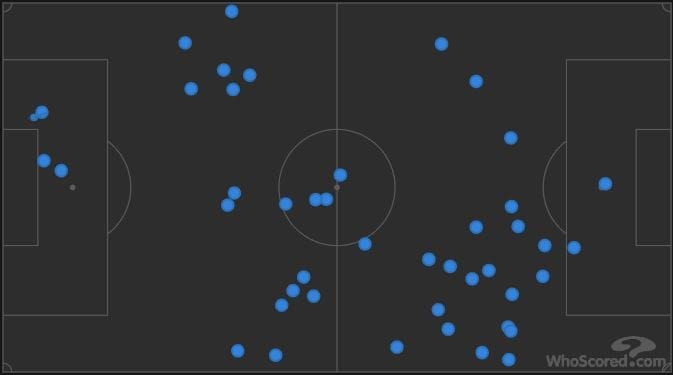
Fede Valverde’s heat map against Real Betis indicates his presence across the pitch. With 44 touches of the ball, the third highest after Modric (57) and Dani Carvajal (55), Valverde looks to become a willing runner and start attacks from deep.
What’s important to note from his touch map is the initial position. Having fewer touches inside the opposition area doesn’t necessarily mean he didn’t influence play further forward, but rather this could be attributed to more runs in the box.
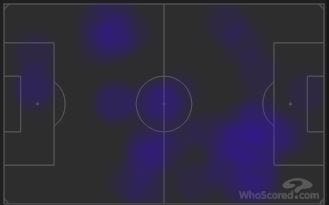
The highlighted area in the opposition box of his heat map corresponds with this notion. He tends to interchange passes from a deeper position before making a run and interchanging passes in the final third. Having a midfielder that can play between the lines and look to make willing runs into the opposition half can help Madrid’s forwards by creating space for them to run into.
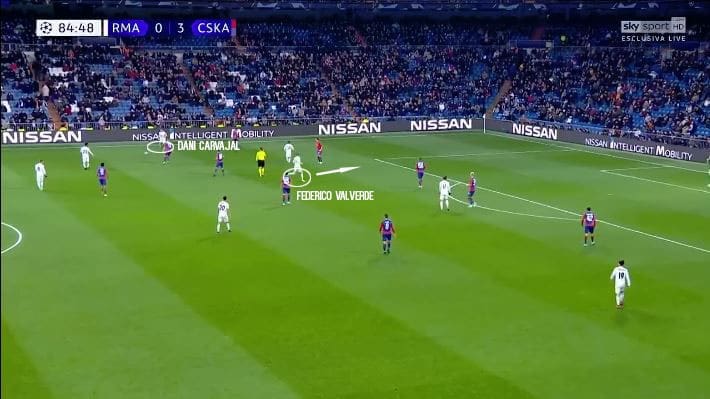
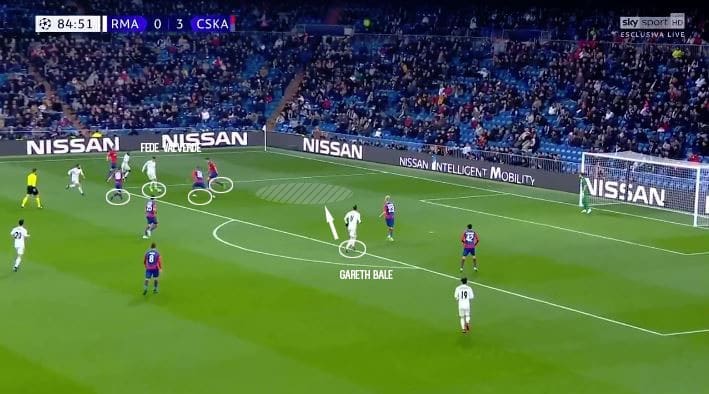
An example of this is shown in the Champions League match against CSKA Moscow where Fede Valverde moves into empty space after seeing Isco passing it to Dani Carvajal. This movement sees him occupy three CSKA Moscow defenders, leaving a big gap for Gareth Bale to exploit.
Defensive workhorse
As a result of his dynamic running, Federico Valverde is able to contribute defensively. With immense stamina and speed, we often find Valverde putting in crucial interceptions and tackles leading to counter-pressing movements and counter-attacks. Having played 386 minutes across 18 appearances he averages almost one tackle per game and 1.1 interceptions making him his presence known defensively.
Players in the mould of Paul Pogba who are more creative and ball oriented, preferring to create chances in the final third before running in to finish that passage of play, are defensively weaker. Meanwhile, players of the Ramires or N’Golo Kante ilk are far more effective with their direct, quick running style as they contribute heavily defensively while not being very efficient in the final third. Federico Valverde looks to combine both with his ability to shoot.
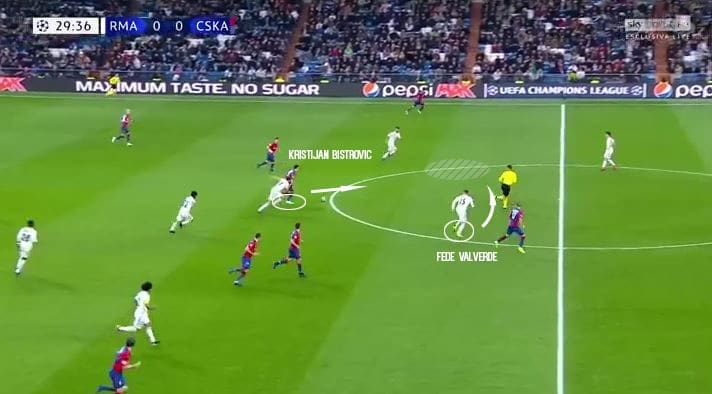
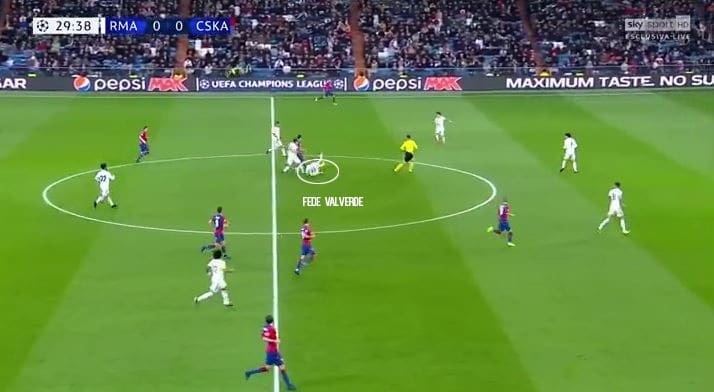
The CSKA Moscow match gave us another example of his defensive work helping to stop the Russian team’s lethal attack. As Kristijan Bistrović strolls forward we can see Federico Valverde in a good starting position covering for his midfield partner Marcos Llorente who stepped up to press the Russian midfield.
Bistrović passes Llorente and looks to have a clear path through Madrid’s midfield but Valverde had other ideas. His perfectly timed sliding challenge stops the Croatian in his path and sets Real Madrid back to mount another attack.
His positioning aids in his defensive work. As we saw in the above example, his initial starting position allowed him to cover the run of Bistrović. Similarly, Valverde has been able to contribute by putting in crucial interceptions and tackles in his own penalty area.
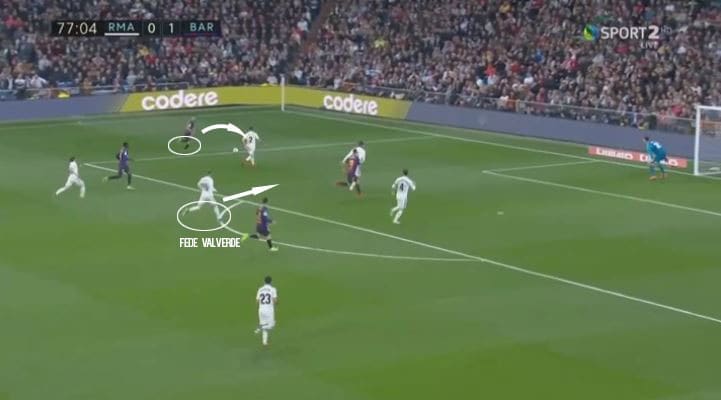
Here against Barcelona, we can see him track Lionel Messi’s run as he looks to try and intercept any crosses into the box. Although it seems Sergio Ramos would have had it covered, having Valverde tracking back eases the pressure and in another situation helps provide extra support.
To summarise, Federico Valverde is defensively switched on and aware of his surroundings. He doesn’t need to be the best defensive midfielder but rather does just enough to help his defence. The bulk of the defensive work will be provided by Casemiro and Llorente with Valverde providing adequate support.
Counter-attacking transitions
The counter-press is one of the most important traits for a team if their play revolves around winning the ball higher up the pitch. Even though Real Madrid are usually possession-hungry, Valverde can give them an alternate tactical option if Zinedine Zidane wishes to do so. With his energetic and dynamic style of play, Valverde can be seen pressing the opposition high up the pitch.
At 20 years of age, the Uruguayan has the energy to chase down players and reinvigorate Real Madrid. N’Golo Kante, Fabinho, Tanguy Ndombele, and Ander Herrera are a few examples of midfielders who adopt an effective pressing style combined with refined passing or movement to become crucial to their team’s success. We have seen Chelsea look like an entirely different team without their dynamic French midfielder looking to break up play and put Chelsea on the front foot.
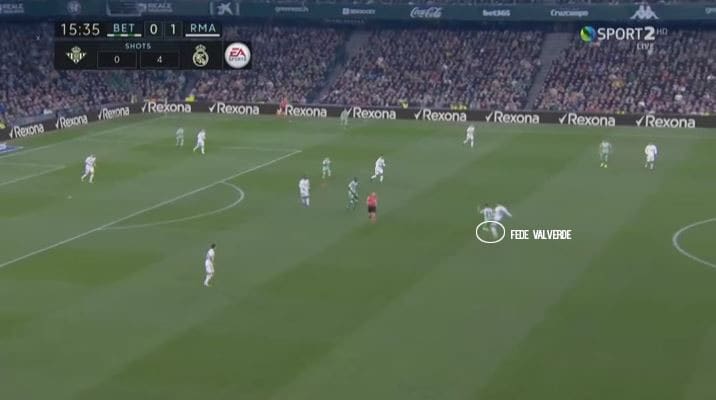
Against Real Betis we can see Valverde looking to pressure the Betis defenders as he pounces at every opportunity. He looks to win back possession on three occasions in the above example, exemplifying his exceptional work-rate and willingness to win the ball back.
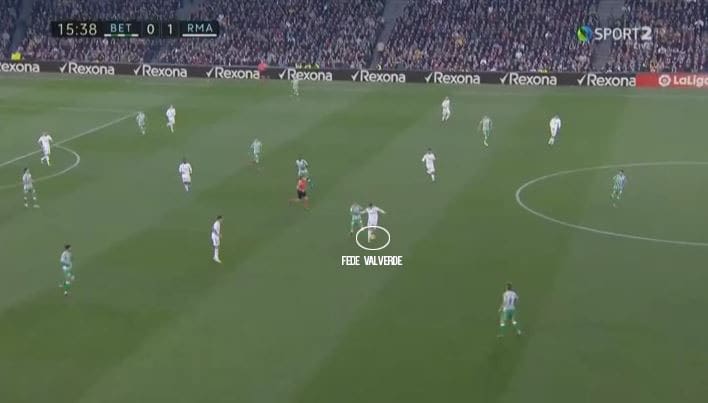
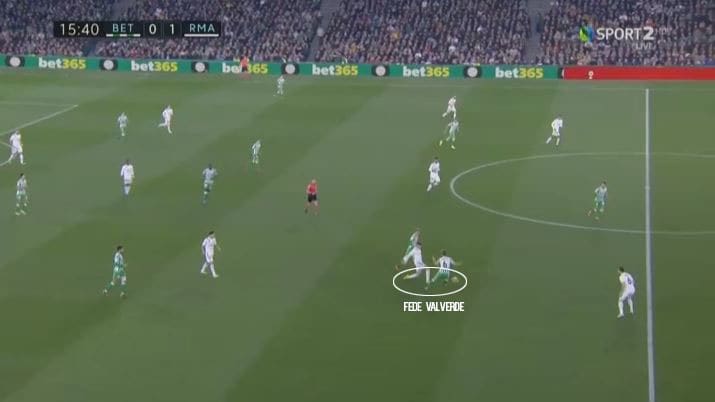
Passing is one area Valverde can improve upon, but still performs adequately to link play during the transition between defence and attack on the counter-attack. Whilst Toni Kroos and Luka Modric are far superior passers and better suited at transitioning from back to front, Valverde’s pace on the counter-attack requires him to use one-touch passing to progress the ball forward without breaking up play.

Valverde’s speed is a huge asset and is useful against teams that are occupied by Madrid’s three forwards, thus allowing him to make a penetrative run through the channels.
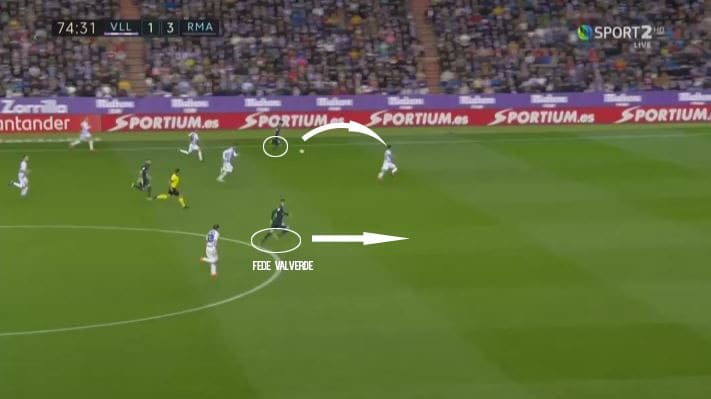
Here we can see his deep run against Real Valladolid where he is able to run at blistering pace to beat the Valladolid defenders. He breaks through to put himself in a one-on-one situation against the goalkeeper.
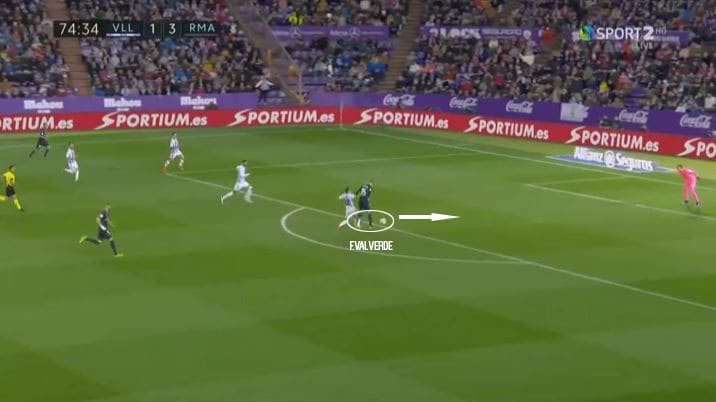
The return of the Galacticos
El Pajarito is at a fascinating point in his career. While game time will provide experience and development, playing with world-class players will teach him lessons he will not pick up on loan. Many people undervalue the presence of experienced serial winners has around younger players. Picking up on the smallest details, their habits and most of all their winning mentality on the training pitch and matches will not come at a smaller club.
Zinedine Zidane’s return to Real Madrid will have a positive effect on Real Madrid Castilla and their graduates as the Frenchmen has supposedly been given the reigns to re-shape the squad. Who better to have a chance to stake their claims than Zidane’s two former favourites in Marcos Llorente and Federico Valverde? Having given them their chance in the reserve squad, Zidane understands their personalities and playing styles, giving him an option to organically construct a galactico team from within that hasn’t been since the days of Raul and Guti.
Fede Valverde’s skill set brings a different dynamic to a Real Madrid squad that needs refreshing. His speed, agility and defensive work-rate are welcome additions to a midfield that has craved pace and invention. After returning to winning ways against a poor Celta Vigo side, the Zidane era has well and truly begun. Can Madrid’s French galactico of yesteryear bring Florentino Perez the swagger and style that he craves through his young cadets, or will he need to dip into the market to replace the inevitable decline of Luka Modric and Toni Kroos?
If you love tactical analysis, then you’ll love the digital magazines from totalfootballanalysis.com – a guaranteed 100+ pages of pure tactical analysis covering topics from the Premier League, Serie A, La Liga, Bundesliga and many, many more. Buy your copy of the March issue for just ₤4.99 here, or even better sign up for a ₤50 annual membership (12 monthly issues plus the annual review) right here.

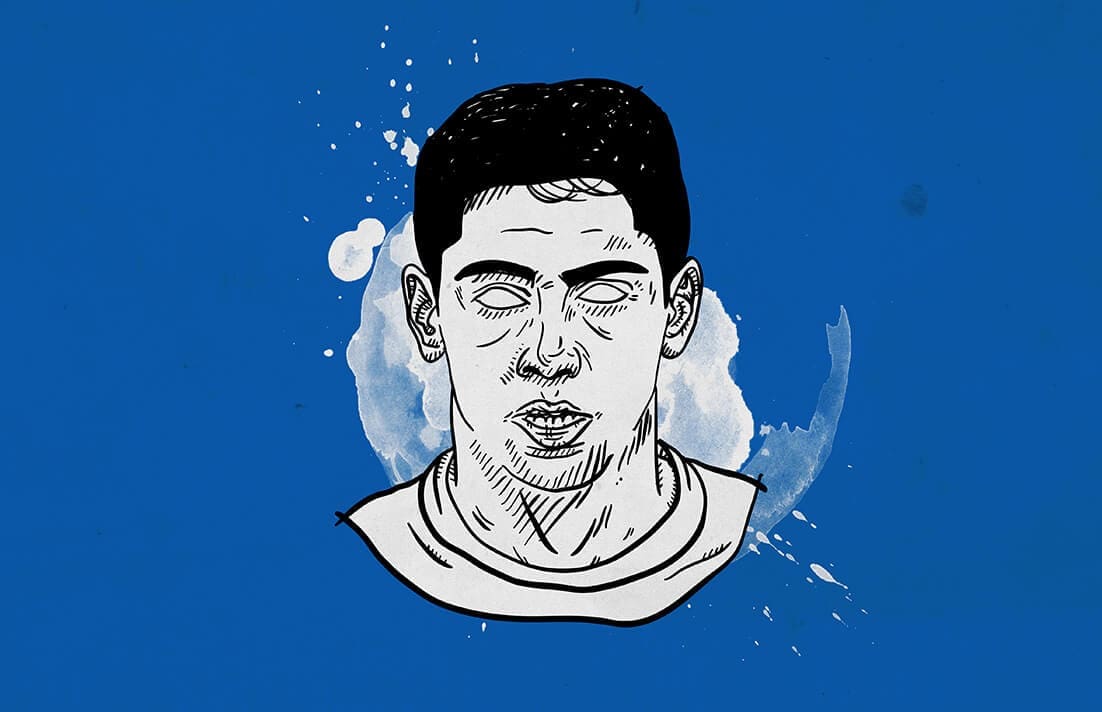




Comments